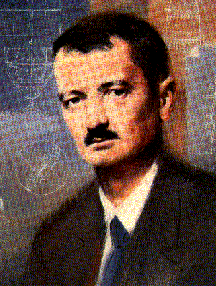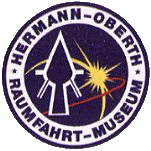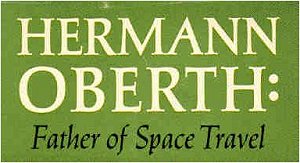
Hermann Julius Oberth, born June 25, 1894 in the Transylvanian town of Hermannstadt, is, along with the Russian Konstantin Tsiolkovsky and the American Robert Goddard, one of the three founding fathers of rocketry and modern astronautics. Interestingly, although these three pioneers arrived at many of the same conclusions about the possibility of a rocket escaping the earth’s gravitational pull, they seem to have done so without any knowledge of each other’s work. Oberth’s interest in rocketry was sparked at the age of 11. His mother gave him a copy of Jules Verne's From The Earth To The Moon, a book which he later recalled he read "at least five or six times and, finally, knew by heart.” It was a young Oberth, then, that discovered that many of Verne’s calculations were not simply fiction, and that the very notion of interplanetary travel was not as fantastic as had been assumed by the scientific community. By the age of 14 Oberth had already envisioned
a “recoil rocket” that could propel itself through space by expelling
exhaust gases (from a liquid fuel) from its base. He had no resources
with which to test his model, but continued to develop his theories,
all the while teaching himself, from various books, the mathematics
that he knew he’d need if he was to ever challenge gravity’s dominion.
In 1922 Oberth’s doctoral thesis on rocketry was rejected. He later described his reaction: “I refrained from writing another one, thinking to myself: Never mind, I will prove that I am able to become a greater scientist than some of you, even without the title of doctor.” He continued: “In the United States, I am often addressed as a doctor. I should like to point out, however, that I am not such and shall never think of becoming one.” And on education he had this to say: “Our educational system is like an automobile which has strong rear lights, brightly illuminating the past. But looking forward things are barely discernible.”
In the thirties Oberth took on a young assistant who would later become one of the leading scientists in rocketry research for the German and then the United States governments; his name was Werhner von Braun. They worked together again during the Second World War, developing the V2 rocket, the “vengeance weapon” for the German Army, and again after the war, in the United States at the U.S. Army’s Ballistic Missile Agency in Huntsville, Alabama. However, three years later Professor Oberth retired and returned to Germany.
By all accounts Hermann Oberth was a humble man (especially considering his achievements) who had, in his own words, simple goals. He outlined them in the last paragraph of his 1957 book Man into Space: “To make available for life every place where life is possible. To make inhabitable all worlds as yet uninhabitable, and all life purposeful.” Hermann Julius Oberth died in a Nuremberg
hospital in West Germany on December 29, 1989 at the age of 95.
and for further exploration, some related sites...
|
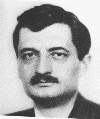

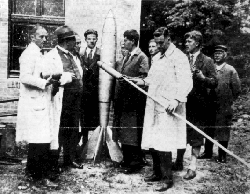
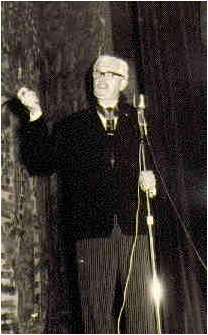


 Korolev
: How One Man Masterminded the Soviet Drive to Beat America to
the Moon
Korolev
: How One Man Masterminded the Soviet Drive to Beat America to
the Moon The
Nazi Rocketeers : Dreams of Space and Crimes of War
The
Nazi Rocketeers : Dreams of Space and Crimes of War Wernher
Von Braun : The Man Who Sold the Moon
Wernher
Von Braun : The Man Who Sold the Moon

